For the past few years, my favourite pedals in sim racing have been the Meca Cup-1 pedals. So I was surprised when they contacted me to tell me they had a new model called the EVO1 pedals. They share a lot of the same characteristics as the Cup-1 pedals other than a hydraulic brake offering and a more versatile base plate. Or so it seemed. I’m Laurence, welcome to the channel.
Product link (affiliate): https://www.demon-tweeks.com/eu/motorsport/sim-racing/shop-by/brand/3427/?source=aw&awc=6538_1682942180_9bdb07c678278e9fe78b75a91def44cd&utm_source=Affiliate_Window&utm_medium=Social+Content&utm_campaign=1016843
data:image/gif;base64,R0lGODlhAQABAAAAACH5BAEKAAEALAAAAAABAAEAAAICTAEAOw==
- Introduction
On the left you’ll see all the sections in this video. I’ve put timestamped links to each section in the description below. While you’re down there please hit the thumbs up button to help YouTube to suggest this video to others like you. 70% of the people who watch my videos are not subscribed. Please consider subscribing and hit the notification bell if you want to be notified about upcoming reviews.
Meca is one of those outlier brands. A niche product which doesn’t get the recognition it deserves. However, their incredible quality to date has earned them a cult status with a massive group of very happy Cup-1 owners. Normally a pedal review is super complex thanks to the elastomers and adjustments in the pedals, namely the brake. I tested both the Load Cell AND the hydraulic pedals with many elastomer configurations for this review and the results are somewhat conflicting and it took me a long time to be 100% certain about my conclusions. I loved the Meca Cup-1 pedals so one of the first things I asked Meca was why they decided to replace the Cup-1 pedals and the answer was simple; Supply chain issues. They took it as a chance to refine their flagship product.
All of the products in this review were sent to me free of charge for the purposes of this review and nobody other than me has had any say in the content of this video. The links to this product and its competitors in the description may be affiliate links and if used will earn this channel some money at no extra cost to you.
- First Impressions
These EVO1 pedals are beautiful. They each come pre-assembled and you need to build the base plate yourself. The horizontal profile that the pedals sit on is adjustable forwards and backwards which is a great idea. However, the heel plate does not adjust forwards and backwards so this is actually less useful than it seems.
Despite amazing quality, the stickers on the heel plate and control box let the overall look down a bit. This product is screaming for some laser engraving.
The 3 cup system from the cup-1 is now a 2 cup system with a spring to simulate the initial phase of braking. I’ll cover that in more detail later. One think I really liked about the cup-1 pedals was the way the control box was presented on an elevated mount. This made the cables line up nicely and really gave it a unique look. The control box for the EVO1 pedals is a lot smaller but the bracket is far less impressive, albeit far easier to hide out of the way.
- Price
These pedals are available is several configurations. The most affordable is the 2 pedal setup which comes in at $517 before taxes. The base plate is an extra $74 before taxes but this is a very good combo for that price. If you’re in the market for a shifter and handbrake, the bundles are very very competitive. I also have those for review and that review is coming soon. I would like to see a 3 pedal with baseplate bundle on here without the shifter and handbrake as I feel that that will be the most popular configuration.
I also got the extended throttle faceplate. This is well worth the tiny price tag and also looks the part. It’s a must have in my view.
- Installation – Hardware
The main assembly is in the baseplate itself which is still relatively straight forward. The pedals require 4 bolts each but as they bolt into t-slot nuts, they’re easy to install from above and adjustments are also very straight forward. The slots for the bolts are HUGE which gives more forward and back adjustment than most pedals on the market.
Installing the whole assembly on my rig should be quite easy, but the front bolts were a pain. I’m really not a fan of how this heel plate attaches. I’d like to see a welded nut on the inside to make adjustments easier. It has height adjustment but no forward and backward adjustment which is disappointing. The main issue I had is that the heel plate obstructs the front mounting holes so installation was far more complex than it needs to be. I’d love to see better access for the front mounting slots.
All pedals plug into the tiny control box which connects to your PC using USB-C. The control box ports aren’t labelled though which is another oversight that I wouldn’t expect at this price point. Even the most budget brands have labels on the ports.
- Installation – Software
Meca provides software to easily calibrate the pedals and set curves for your pedal inputs. These curves allow you to specify a non linear relationship between the amount of travel or force on your pedal and the amount of input that registers in game. In other words, you may drive cars which are super sensitive on the throttle when exiting corners and you might want to dedicate the majority of your pedal travel to the first 25% of your throttle input.
Once the software is configured, you don’t need to run it again. The pedals work great without the software running. During calibration I did have some little input jumps happening which were easily addressed with a little bit of deadzone. One pedal lost its calibration within minutes but once recalibrated, it worked fine after that.
- Clutch
The clutch setup on these pedals is pretty impressive visually. It simulates a bite point and allows for a small amount of adjustment. Unlike the other two pedals, you cannot alter the starting point of this pedal face. The cantilevered mechanism works great to accurately simulate the feeling of a clutch pedal once disengaged. You get that sensation of lightness when not engaged and that sense of slow engagement after the bite point. It’s incredibly rewarding to use. It’s a shame sims don’t properly simulate the bite point but this clutch is definitely one of the best clutches in sim racing for me.
- Throttle
I’m a fan of a nice heavy throttle which is easy to modulate and this throttle allows that nicely using a tool-less preload adjustment. You have enough adjustment to change the starting point of the throttle throw significantly. There’s also plenty of adjustment to suit most tastes without the need to swap out springs. Adjusting the pre-load doesn’t affect the pedal travel which is a separate adjustment. You do need tools for that and I have somehow managed to loose one of my bolts. You can tell by the bump stop that these pedals have been enjoyed in anger. I threw everything I had at them and they absolutely lapped it up, if you pardon the pun. One major improvement over the Cup-1 pedals is the silence of operation with the EVO1 pedals. I didn’t need to lubricate any of the parts over the several months that I used them.
- LC Brake
Here’s where it gets complex. I’ll save my comparison for the Final Thought and for now, I’ll concentrate solely on the Load Cell pedal and elastomer stack. At first I wasn’t sure about the addition of a spring here, but it does a great job of simulating the initial phase of power assisted braking. You don’t need to put too much effort into trail braking but there’s still enough resistance to easily modulate this first little phase. It makes for a very intuitive and enjoyable experience, especially in cars which are more difficult to balance through corners. You can adjust the starting angle of the pedal slightly but moving it a lot will influence the preload on your pedal.
I tried many adjustments with these pedals but the default was best for me. Adjusting your load cell stack is super simple and tool free, just be careful not to pinch your fingers on the metal parts. If you’re not sold on the initial spring feeling, you’re out of luck because with the Meca EVO1 Load cell brake, you can’t replace the spring with an elastomer. Not easily anyways as Meca doesn’t supply you with another elastomer cup and the preload adjuster also has a raised edge on it which sits perfectly into the spring, but it would ruin an elastomer over time, as well as not getting as good a feel from that elastomer as you would get with a flat surface and cup. I tried it with an extra elastomer and it just didn’t feel right to me. Unfortunately, the elastomers in an elastomer stack need to have a nice balance and the other elastomers are too much softer or harder than the spring to get a balanced feel. So adjustability is possible, but the results weren’t as good as I expected. Luckily, that default really suited me.
I was instantly on pace with these pedals and thoroughly enjoyed my time with them. Ultimately though, the default configuration was extremely satisfying for longer stints. Not too heavy, but plenty of feel to nail those braking zones. They’ve really done a phenomenal job with these and I think they’ve studied their competitors closely and tested them intensively to gain the upper hand. They’ve gotten it right yet again with the EVO1 pedals.
- Hydraulic Brake
This is by far the most realistic hydraulic pedal I’ve ever used. It feels like a brake in a high end sports car or supercar. Unfortunately, I don’t have much experience with dedicated race cars so I cannot comment about those, but the amount of feel and travel in this hydraulic brake really sets them apart from others that I have tried. Again, I haven’t tried them all so maybe I’m just easily impressed here. This is the best hydraulic brake in sim racing. As I mentioned in the previous section, I will not be comparing it to the load cell offering in this section. I’ll save that for the end.
As well as being probably the most impressive looking brake pedal in sim racing, it features great adjustability, including preload and starting point adjustment as well as two swappable elastomers. These elastomers are larger than the ones on the load cell brake and also feature the cup system. They’re visually stunning and the little bracket that Meca supplies makes them very easy to fit. Again you don’t need any tools to adjust the elastomer stack here which is really nice for quick adjustments. They come with the two black elastomers fitted by default and they’re they lightest. Some might feel that the brake pedal is slightly slow to return with these elastomers but even though I’m sensitive to that with some other hydraulic pedal sets, it wasn’t an issue for me here. Replacing those black elastomers with the heavier blue 80 shore and orange 90 shore elastomers makes these pedals a far different beast. You get a much stiffer pedal and and they feel incredible. Apparently, you can even run this hydraulic pedal in an inverted configuration.
- Final Thought
Most people have skipped to this section to find out which I prefer; the load cell or the hydraulic brake. My initial answer is very diplomatic as in, They’re both at the top of the game as far as braking in sim racing is concerned. They’re extremely extremely good, but also quite different. This is where my diplomacy goes out the window. I prefer the Load Cell brake, despite the flaws I experienced in the balance of the adjustability.
That’s probably not the conclusion most of you expect here, but please hear me out. To put it simply, if I wanted to have my friends around and wanted to impress them with how realistic my rig is, I’d mount the hydraulic brake. It’s sensational and feels like it was lifted straight out of a high performance car. However, if Daire McCormack needed to use my rig for a competitive esports event, I’d put the load cell brake on there. I just found it easier to modulate and although it’s not AS realistic as the hydraulic brake, it just feels like a better sim racing brake pedal for me. In an environment where we don’t have the seat of our pants to rely on, we need to train our minds and legs to brake as consistently as possible and with the load cell brake, I didn’t have to think about anything. It was all intuitive. It was slightly more difficult with the hydraulic brake BUT, even though I went back and forth between them a lot for this review, I didn’t notice any difference in pace or consistency between the two. All I can tell you is that I felt more ‘at home’ with the Load Cell brake and maybe this is simply due to my experience with sim racing pedals. I cannot quantify my reasons but I have tried my best to explain them. If you don’t want to have any doubts, buy the Hydraulic brake. If you really want that initial brake phase which is lovely for trail braking, buy the load cell. If the load cell pedal’s default setup didn’t suit me so well, I’d definitely prefer the hydraulic.
There are many very satisfying high end pedal sets out there and all for different reasons. Some have a great brake, some have a great throttle, some have a great baseplate. Very few have it all and these pedals have it all. The issues I found are knit picks and each of these pedals is a masterpiece in its own right.
The electronics box is not as bold as with its predecessors but that’s not a bad thing either. I would have liked to see them keep that design as it really sets these pedals apart visually. I think they ditched that concept because the sheer size of the EVO1 brake pedals. Adjustability is decent although the heel plate could be a lot easier to adjust. As it stands it’s an awkward installation and adjustment and there’s no forwards and backward movement. A welded nut would make this a far more user friendly process. Luckily you CAN slide the entire piece of profile that the pedals attach to although I found this to be very stubborn and not practical while they’re mounted to the rig.
I think they’ve improved on the Meca Cup-1 pedals in many ways. I’d like to see the option for a 3 cup elastomer stack on the Load Cell brake though. The EVO1 pedals are definitely less noisy and require less maintenance. The black also hides dirt and marbles from rubber soles a lot better.
It is my job to be critical of equipment that I review so that consumers can make educated decisions. These pedals are incredible and I cannot imagine anyone not loving them. In fact, they may be the best pedals I’ve ever used. I’m Laurence, I stream every Tuesday and Thursday at 9pm UK/Irish time. Thanks again to Meca Sim Hardware for making this review possible and to you for taking the time to watch, hit the thumbs up or comment with your experiences or opinions. I’m Laurence, and I’ll chat to ye later.

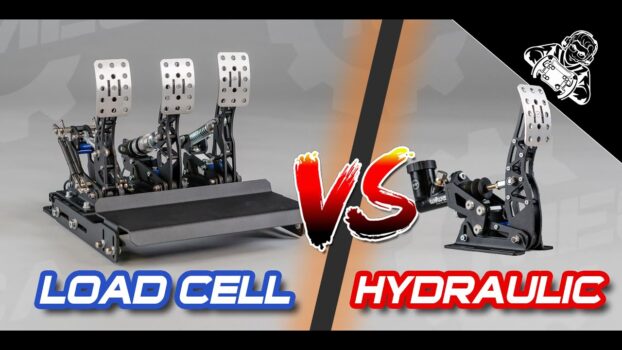

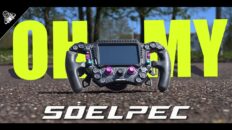
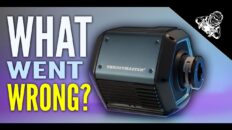
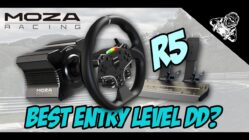

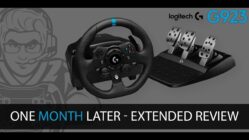
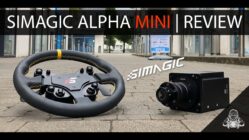
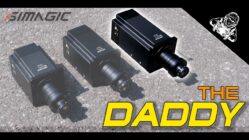

Add comment